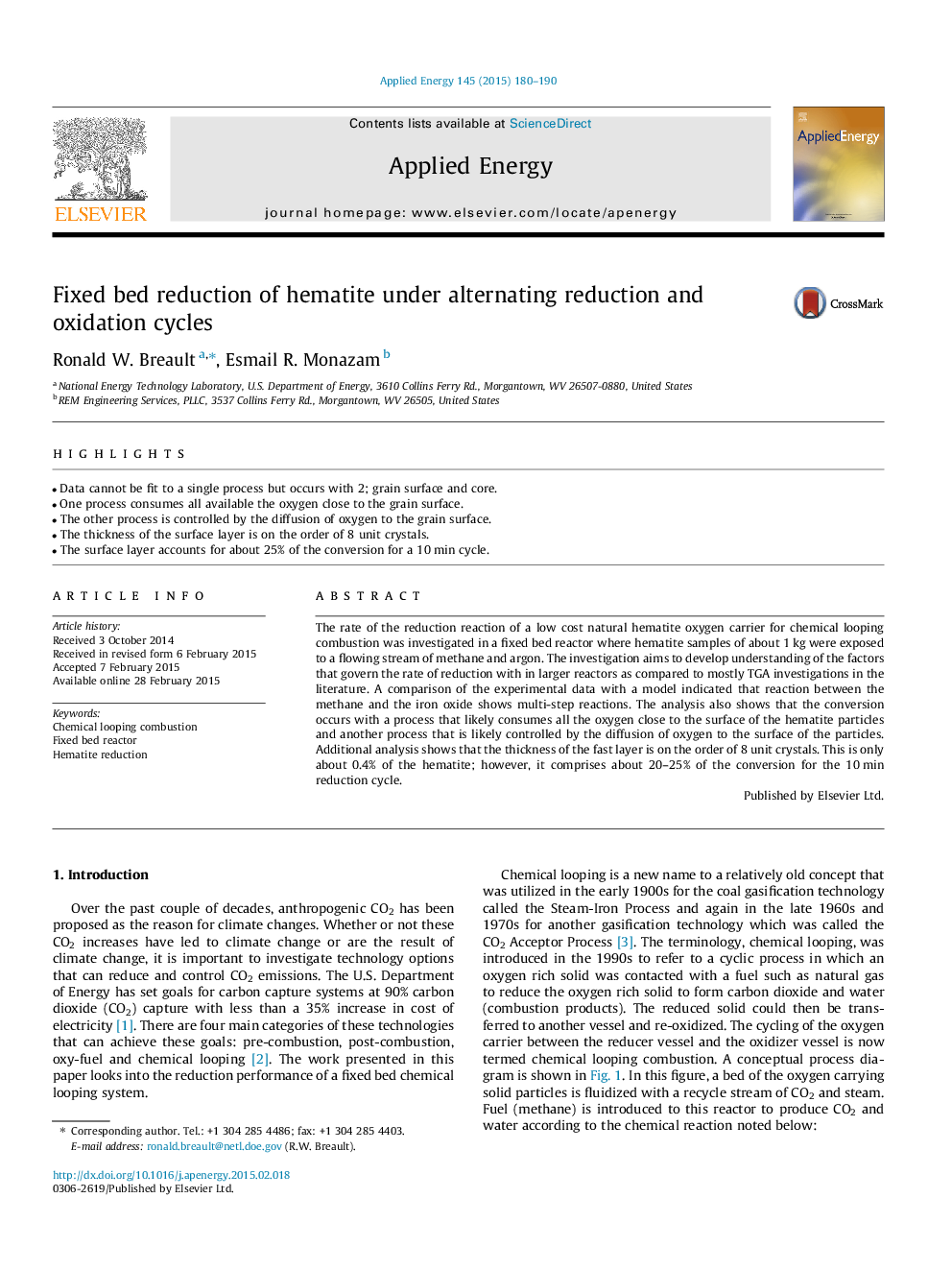| Article ID | Journal | Published Year | Pages | File Type |
|---|---|---|---|---|
| 242549 | Applied Energy | 2015 | 11 Pages |
•Data cannot be fit to a single process but occurs with 2; grain surface and core.•One process consumes all available the oxygen close to the grain surface.•The other process is controlled by the diffusion of oxygen to the grain surface.•The thickness of the surface layer is on the order of 8 unit crystals.•The surface layer accounts for about 25% of the conversion for a 10 min cycle.
The rate of the reduction reaction of a low cost natural hematite oxygen carrier for chemical looping combustion was investigated in a fixed bed reactor where hematite samples of about 1 kg were exposed to a flowing stream of methane and argon. The investigation aims to develop understanding of the factors that govern the rate of reduction with in larger reactors as compared to mostly TGA investigations in the literature. A comparison of the experimental data with a model indicated that reaction between the methane and the iron oxide shows multi-step reactions. The analysis also shows that the conversion occurs with a process that likely consumes all the oxygen close to the surface of the hematite particles and another process that is likely controlled by the diffusion of oxygen to the surface of the particles. Additional analysis shows that the thickness of the fast layer is on the order of 8 unit crystals. This is only about 0.4% of the hematite; however, it comprises about 20–25% of the conversion for the 10 min reduction cycle.
